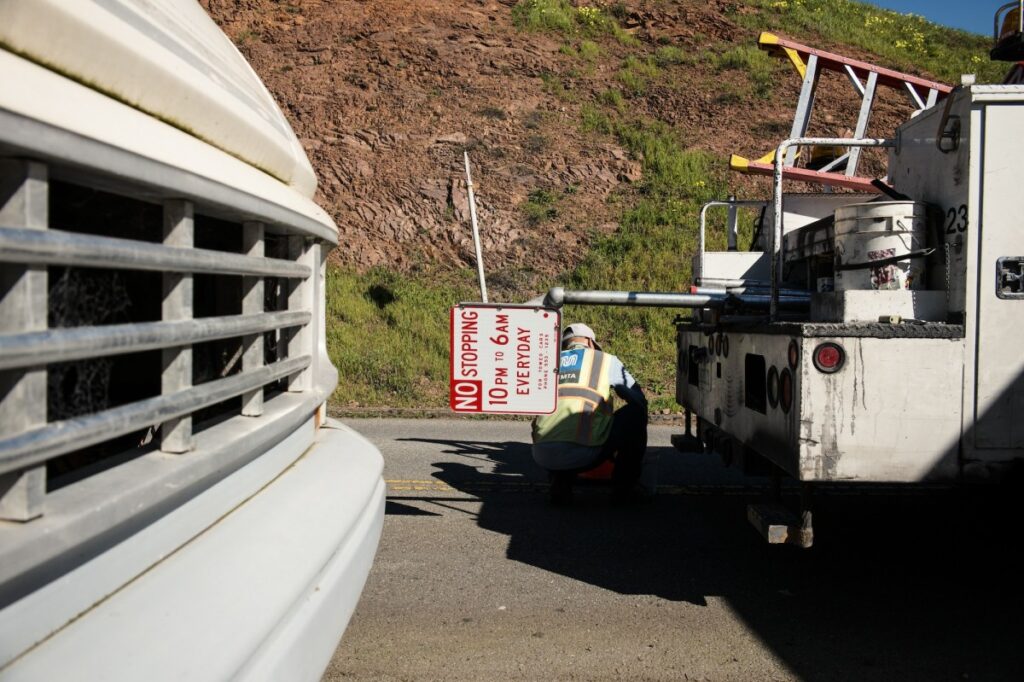I once believed San Francisco was a city of compassion. But after living in an RV community over the past year, I’ve come to understand that what looks like bureaucratic failure is something far more intentional: a system designed to displace.
Our small RV community—around a dozen vehicles with individuals, families, elders, and pets—once lived peacefully on Bernal Heights Boulevard. We shared food, helped each other get to work, and watched one another’s pets. Then came the 311 complaints: reports of sewage, noise, and even fabricated harassment. One officer warned us we’d be arrested “if we so much as winked at a teenager.”
A kind parking enforcement officer would visit every two weeks to mark our tires and tape SFMTA orders to our RVs—move or be towed for violating the 72-hour rule. When I asked for an explanation, he responded in a wonderful West African accent while shaking a thick folder of 311 complaints: “I don’t understand these crazy people; you are nowhere near their homes, you keep the area clean, you don’t bother anyone, and yet they keep calling every week with complaints.”

Then came the public shaming. One morning, I awakened to photos of me and my dog Audrey on the front page of the Chronicle. The headline: “S.F. revives old parking ban to clear the RV sprawl in Bernal Heights.” Our lives reduced to a nuisance—or worse, a blight.
Yet neighbors pushed back—more than 30 wrote letters of support to the city, including then-Mayor London Breed. One letter, later published in the Chronicle, described a different story: one of coexistence, mutual aid, and community.
Still, we were ordered to leave.
With help from the Coalition on Homelessness and the Vehicle Encampment Eviction Defense Network, we moved as a caravan to the Bayview. Two days later, the city offered space at the Candlestick Triage Center—but only one space when I asked for room for all of us. The next morning, police, bulldozers, and city workers dropped concrete barriers into our parking spots.
That marked the start of our forced migration: from Bernal to Bayview, then to McLaren Park, San Bruno Avenue, and Bayshore. Each move was triggered by new 311 complaints, followed by aggressive sweeps justified by “public safety” concerns.
A key part of this displacement strategy is the negative political rhetoric—especially after the Supreme Court’s Grants Pass decision criminalizing homelessness—that city officials used against RV dwellers. This rhetoric paints us as undeserving, a public health crisis, our homes as eyesores. It gives the public permission to treat us with disdain and cruelty. Housed neighbors would routinely harass us verbally, photograph us and our pets, and destroy our property. At McLaren Park, a man brandished a knife while yelling that we needed to leave his “million-dollar neighborhood.”
Some city officials showed empathy and respect. But others—like a certain police officer assigned to Bernal and Bayview—were relentless. He ticketed vehicles before enforcement moratoriums ended, then switched to citing expired tags, sometimes writing multiple tickets for the same infraction. At 5 am, he banged on a neighbor’s RV with a baton, yelling at the couple to leave. He seemed always one step ahead as we migrated between neighborhoods.
Even the city’s “solutions” have failed—perhaps by design. The $15 million Candlestick Triage Center quietly shut down with little transparency or measurable outcome. Because it was never really about help. It was about removing us from sight.
This is why infrastructure-first homelessness models that work in other cities fail in San Francisco. Those approaches depend on trust and shared values. But here, the system hides cruelty behind policy and process.
To the public, this may look like order. But to those of us living it, it’s clear: the cruelty isn’t a glitch. It’s the point.
Armando Bravo Martinez is a UC Berkeley graduate with a master’s degree in International Relations. He is a two-time Ford Foundation Senior Fellow at the World Policy Institute at the New School in New York. For over a decade, he has worked as a private caregiver supporting patients with early-onset dementia, Alzheimer’s, Parkinson’s, and stroke. He is a proud member of the Bernal Heights RV Community.




